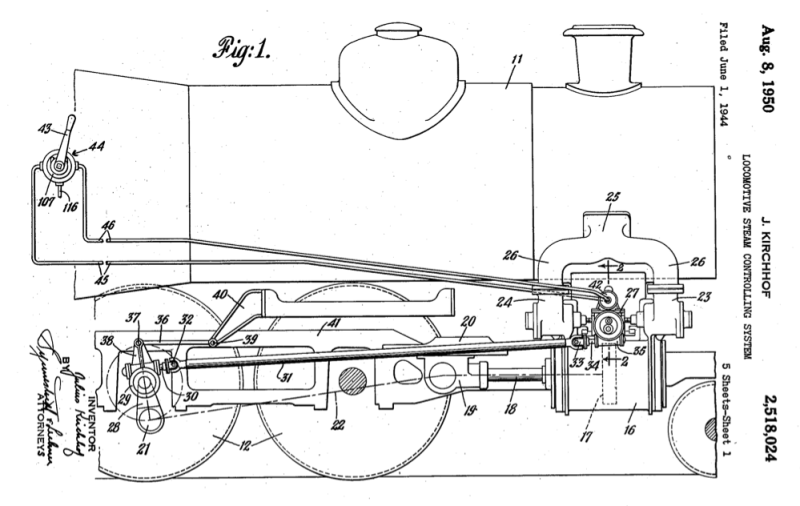So this weekend was the last regularly scheduled weekend of operation for the Adirondack Railroad's 2021 season, and I had planned to ride on Sunday for the Utica-Thendara round trip (Saturday's Utica-Thendara run has a 3 hour layover at Thendara to go explore Old Forge, while Sunday's run is a there-and-back with no layover). I was really hoping to get tickets for the dome car, but when I called I learned that not only was there no dome car tickets for Sunday, there were no tickets for any cars for either day available. Completely sold out weekend. Which, good for them, glad to see that they are filling all their seats and proving the naysayers wrong, but sucks for me. I also feel bad because despite being local to me, I have never actually ridden the Adirondack Railroad. I know, I know, shame on me, traveling to Maine and Pennsylvania (repeatedly) and skipping the local ride just 20 minutes from home.
Since there were no seats onboard, I instead decided to try and chase it the full length. Previously I had only chased it as far as Remsen, so I wanted to catch it at some of the more northern points, as well as try some new sites. Unfortunately, I learned a couple lessons with scoping out new sites and chasing. One, some sites referenced are not easily found on maps. A lot of the folks familiar with the line reference places like Remsen Hill or Pit Four, but those don't show up on maps and aren't necessarily easily accessible. For example, I learned that Remsen Hill is between Milepost 14 and 17, which is in between grade crossing, and the only way to get to it is to hike back along the ROW several miles from Plank Road crossing, which I feel squeamish about, between it being technically trespassing and the woods being swarmed with trigger-happy hunters this time of year. Or that Pit Four Road is just a loop on the site of the old mine and doesn't cross the railroad tracks, they are in fact on the complete other side of the Moose River. Also, while Google Maps is great for following the rail line and identifying crossings, it doesn't tell the whole story. On two separate occasions I discovered that the roads were blocked off with boulders and converted to hiking trails, despite me GPS telling me to just drive down them. The other issue is that they have a lot of ground to cover between Utica and Thendara, so they run at 50mph in a lot of segments and the roads don't closely follow the tracks or have as direct a route, so you really have to space out your sites and haul ass on the roads to get ahead of them. I had a couple instances of seeing the last car clearing the crossing right as I was arriving.
Of course, I wake up Sunday morning and it's cold, windy and pouring rain. Not ideal, but it's not like I can catch it next weekend, so I put on two jackets and toss spare dry socks and shoes in the Yaris and hit the road. My first stop was at the grade crossing at Sand Road. Its a pretty good spot on a curve and an uphill grade, with good lines of sight. I was expecting one or both of their RS-18us on the front, or maybe an RS-18u and their FP10. Instead, I was surprised when the train came roaring up the grade through the wind and rain with two of Mohawk, Adirondack & Northern's big Alco C425s leading the charge.
From what I heard, the reasons for borrowing the big Alcos were twofold: One, one of the RS-18us was up north of Thendara on a work train, while the other was running the short train from Thendara to Otter Lake. That leaves only their FP10, #1502, since F7A #1508 seems to be out of service, their "new" RS-3 #8255 isn't ready for primetime and the M420W hasn't arrived yet. Running up to Utica with a single F-unit would be difficult, since they don't have a wye at either end, so it would have to run backwards back to Utica, which isn't pleasant for the crew or safe. The other reason is that they were running a long, heavy consist, with every seat in use, and the weather was cold and rainy with leaves on the rails, so they wanted the extra horsepower. Two C425s is quite a bit more power than even two 1,800hp RS-18us.
I tried to catch it at the Plank Road crossing but wasn't fast enough. I then skipped Remsen station and caught it at the Meekerville Road crossing, where I got a mediocre video not worth posting. I then leapfrogged ahead, driving like a bat out of hell and caught it at McKeever. But it was raining so hard I couldn't get a good photo. I should have waited there and caught the Thendara-Otter Lake local on the return to Thendara, but went to find another site, which was one of those places where the road doesn't exist anymore, despite what the GPS says. I did catch the Utica-Thendara on the return though, and the big Alcos were smoking it up as they charged up the grade after the bridge over the Moose River.

I then tried to rush ahead and get it going past the old Forestport station, but the issue with driving around the Adirondacks on a Sunday is you get stuck behind all the campers headed home for the weekend. I got to the crossing right as the gates were going up. I then drove like the devil to get to Prospect Junction Road and catch the train drifting downgrade over Route 365.

Knowing they have to reduce speed for a number of grade crossings in Remsen, I hurried ahead to catch them pass the Holland Patent station.

And then, it was back to Union Station in Utica.
































































